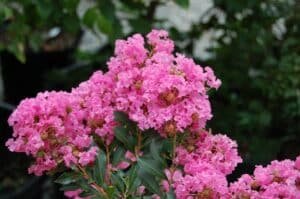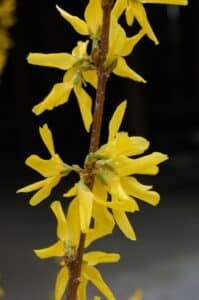Now that fall is here, we’re in the time slot that the garden answer phone starts ringing of the hook. “Is this a good time to plant?” “What can I plant that the deer won’t eat?” “What trees grow fast, don’t get too big, flower all year and change the oil in my car?”
But the most common of the fall gardening questions… is this the best time of year to cut back my shrubs? So as a community service, here’s a little questionnaire we put together to help you decide the best way to manage the shrubs in your garden:
1- Why do you want to cut back your shrub?
Many people believe that since God invented the pruning shears, that means those shears need to be used to butcher shrubs into meatball, nose cone and hockey puck shapes. But the truth of the matter is, shrubs don’t need to be cut back. In fact, shrubs existed just fine for millennia without the able assistance of well-intentioned gardeners.
Cutting back shrubs is not an evolutionarily set instinct like geese flying south for the winter or parents ruining the lives of their teenage children. Nope. Shrubs, in general, are perfectly content to sit there in your yard and get a little bigger each year until they screen out the neighbor’s Pretty Pony plastic clubhouse or ill-placed VW beetle up on blocks. There are plenty of valid reasons for pruning or cutting back a shrub. But “just because” is not one of those reasons.
2- How do you deal with a shrub that’s getting too big?
Whether conditions in the garden have changed, you installed a new walkway or maybe you just planted the wrong plant in the wrong place, sometimes plants just grow where you don’t want them to grow. There’s no reason to feel bad or hide your face in shame at neighborhood gatherings. We’ve all been there. The question is, what to do about it.
Some shrubs exhibit what we call a suckering growth habit. Shrubs such as red stemmed dogwood (Cornus sericea) and forsythia (Forsythia x intermedia) constantly send up new shoots from the base of the plant. These plants can be cut to the ground in winter and will usually respond with rapid new growth in spring. It’s a great treatment for plants that are showiest in the young growth stage. The red stemmed dogwoods, for instance, show the brightest coloring in the bark of new, vigorous growth.
Another option for controlling growth of suckering shrubs is to cut at ground level, the oldest branches each winter. This removes the older, less showy branches, provides room for the younger shoots to thrive and will keep your shrub at a lower height.
For shrubs with a non-suckering growth habit such as yews (Taxus species), button bush (Cephalanthus occidantalis) and azaleas (Rhododendron species), severe cutting back to the ground in winter is generally not a great choice.
3- What about flowers and fruit?
If you planted your chosen shrub for the flower and/or fruit display, you’ll want to pay special attention to how it grows to plan any pruning work. Most spring blooming shrubs such as lilac (Syringa species), viburnum (Viburnum species), and forsythia (Forsythia x intermedia) set their flower buds in the late summer and fall so they are ready for action come spring. Winter pruning will remove those flower buds so you’ll have reduced spring flowering or no spring display at all. Spring blooming shrubs can often be pruned after their spring bloom. They’ll usually put on new summer growth and set the following year’s flower buds without much problem.
Many summer blooming shrubs set their flowers on current season’s growth so they can be pruned heavily in winter and will usually still flower the following summer. Examples of shrubs that flower on new growth include crepe myrtle (Lagerstroemia species), beauty berry (Callicarpa species) and butterfly bush (Buddleia species).


4- What’s the deal with hedges?
Of course shearing hedges is a drastic example of annually cutting back of your shrubs, but rather than being done for biological purposes, hedging is done for the purpose of creating a specific design element. When you’re looking for a striking, formal shape, be it a long, rectangular hedge or even a geometric topiary form in the garden, hedging is the answer.
Hedging involves cutting back branches to a tight surface texture, usually to create a smooth, regular form and to accentuate the overall geometric shape of the plant(s). The question that usually comes in about hedging is about how often hedges need to be sheared. And the answer is, as is so often the case, it depends.
If you want your hedge to look tight and very formal through the entire year, you might be out there 2 or 3 times a year to keep everything looking all nice and tidy. If, on the other hand, you want a less formal look, you might be able to get away with a single annual shearing. It depends on both your own particular style and on the vigor of your chosen hedge plant.
And when it comes to timing, most people find it works best to shear hedges in late winter to set them up for the coming season. If a second shearing is needed, it’s usually best to shoot for late spring or early summer. Heavy shearing after about July 4th can lead to late season growth that doesn’t have sufficient time to prepare for winter and can leave you with winter-killed tops to your plants.
Of course if none of the above strategies fit your situation and you’re stuck with a shrub that’s outgrowing its home, maybe it’s just time for a backhoe!
This article was originally submitted to the Courier Journal on October 19, 2022.

